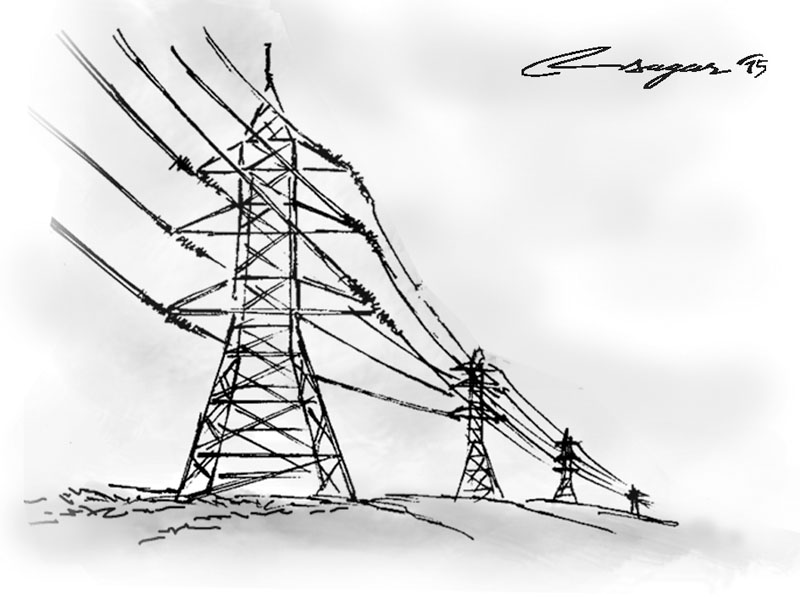Electricity development: Let us correct the price
It will help the private sector to get the price for stimulating further investments. It also helps NEA to operate in better financial health and to enhance electricity trade with Indian and other South Asian power markets
The supply of electricity is inadequate in Nepal. The situation is unlikely to improve for some more years, at least in the dry season. As per Nepal Electricity Authority (NEA), there will, however, be surplus of electricity in the rainy season three years from now. The cost of inadequate electricity is exorbitantly high for developing countries like Nepal. A large number of generator sets are imported to supplement electricity supply during load shedding hours. Consumption of diesel has gone up, further worsening the balance of payment situation. Cost has gone up for most of the products. All these have constrained economic growth and social well-being of the citizens.
Various factors have contributed to the inadequate electricity supply. Inability to develop sufficient generation projects, failure to plan and build enough transmission lines, and existence of considerable leakages in the power system are the main ones. Lack of sufficient generation is caused by many reasons. The most important are related to unfeasible power purchase rates, NEA’s financial health to sign attractive PPA rate with the private developers, and lacking of proper planning and forecasting capacity within the government system. Furthermore, NEA is also involved in power generation and is also a sole buyer of electricity generated by the private sector. In the absence of an independent regulator, NEA for obvious reasons can impose artificial obstacles on the private sector entry into the electricity market considering them as its competitors.
NEA’s poor health also affects transmission line expansion. NEA has, so far, been operating the national grid. An organization with a poor financial health cannot attract more funds for investment in transmission system expansion. The transmission system cannot become financially viable in the absence of proper power wheeling mechanism and rates.
The available evidence indicates that the situation is not going to improve in the future if the problems are not analyzed and addressed properly. One of the core problems, apart from the others, lies on the pricing of electricity; that relates to the cost of power generation, cost of supply and the price charged to the different consumer groups – that is the tariff rates.
Per unit cost of electricity generation varies across the technologies (hydropower, diesel or solar), types of plants (Run-of-the River, daily storage or storage), and types of ownership (NEA or private). The true cost of electricity is, however, not readily available in Nepal; at least to the general people. According to NEA’s annual report, its average price of electricity is 8.14 Nepalese rupees per unit (kWh), whereas its average power purchase rate is 7.52 rupees per unit. Furthermore, NEA’s reported loss in its system is around 24 per cent in the fiscal year 2014/15. NEA incurred a net financial loss of 6460.04 million Nepalese rupees, whereas it sold 3743.09 gigajoule electricity in FY 2014/15. The financial loss per unit of electricity sold comes to 1.72 Nepalese rupees per unit. For the obvious reasons, NEA may not have further incentives in increasing its supply of electricity at the present level of tariff and the power purchase rate. When NEA has no incentive in increasing its supply, then it may not be willing to sign further power purchase agreements with the private developers, creating artificial restriction on the private sector entry into the electricity market.
The cost of generation of electricity is also expensive in Nepal compared to its immediate neighbor, India. If the cost of electricity is not competitive with the Indian market, then power trade with India may not become feasible, at least in the short run. Expansion of electricity sector is not feasible if Nepalese electricity market is not integrated with the Indian electricity market. The Nepali market, alone, is too small to achieve the full benefits of electricity trade and to harness the hydropower potential that exists in Nepal.
The solution rests on the committed efforts on making the generation cost competitive and ensuring the tariff established based on market principles but socially acceptable manner for the lifeline consumers. It helps NEA or power utility to operate at least at break even point. At the same time, measures for reducing possible cost of generation need to be explored with prime importance. Proper basin planning, selecting the right size and types of the generation plants and further strengthening regulatory functions through establishing a separate regulatory authority will be indispensable.
In conclusion, Nepal needs to take some bold steps to relieve the burden of inadequate electricity supply and further expand power trade with India. It needs to correct its electricity pricing mechanism in terms of PPA rates to be signed with the private developer and tariff rates to be charged to the different consumer groups. Efforts to reduce generation cost, to the extent possible, are inevitable.
This will help the private sector to get the price for stimulating further investments. It also helps NEA to operate in better financial health and to enhance electricity trade with Indian and other South Asian power markets. This should be done systematically considering a long term vision supported by plans and policies with proper institutional mechanisms put in place.
Adhikari is an energy economist






